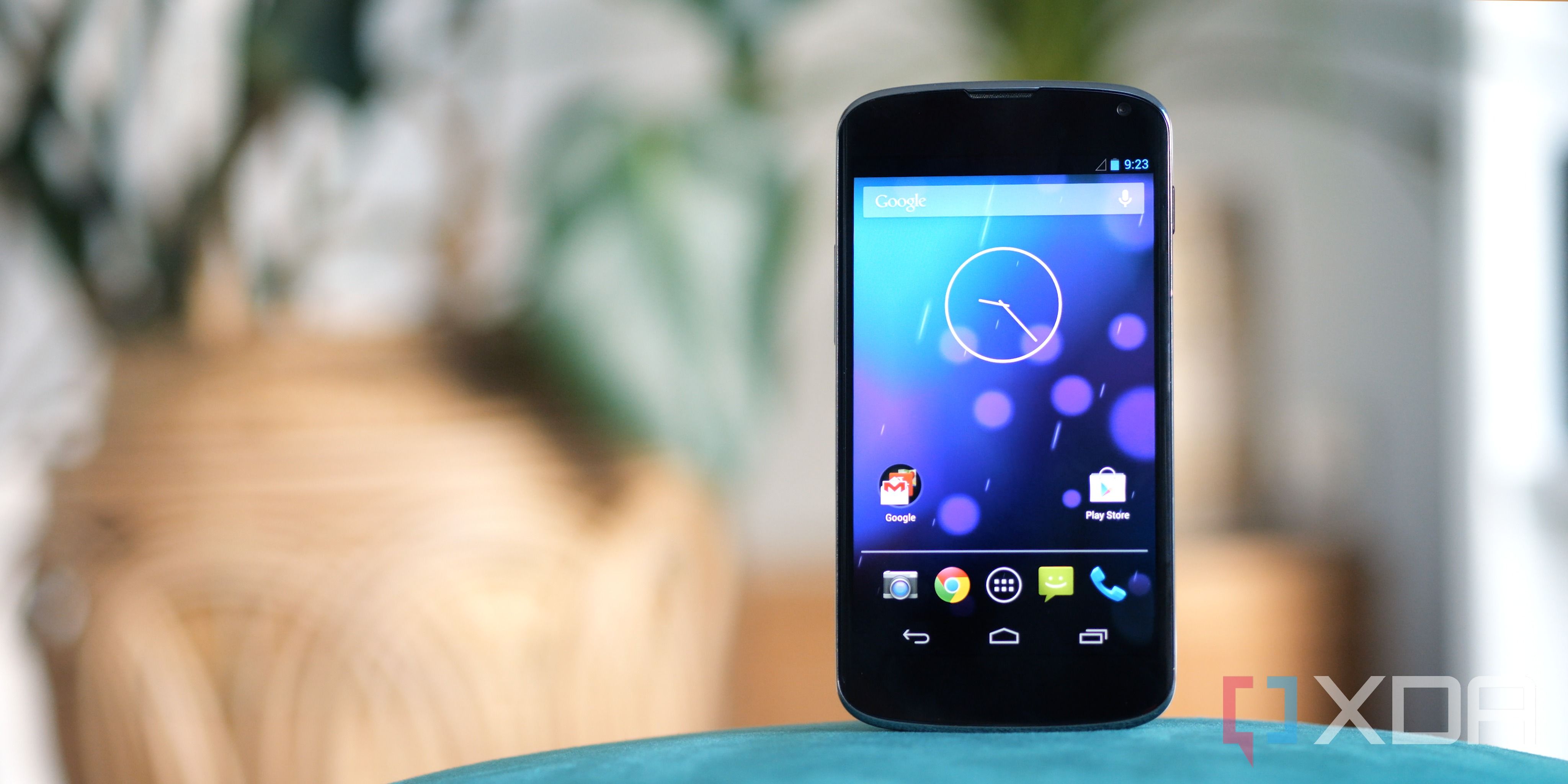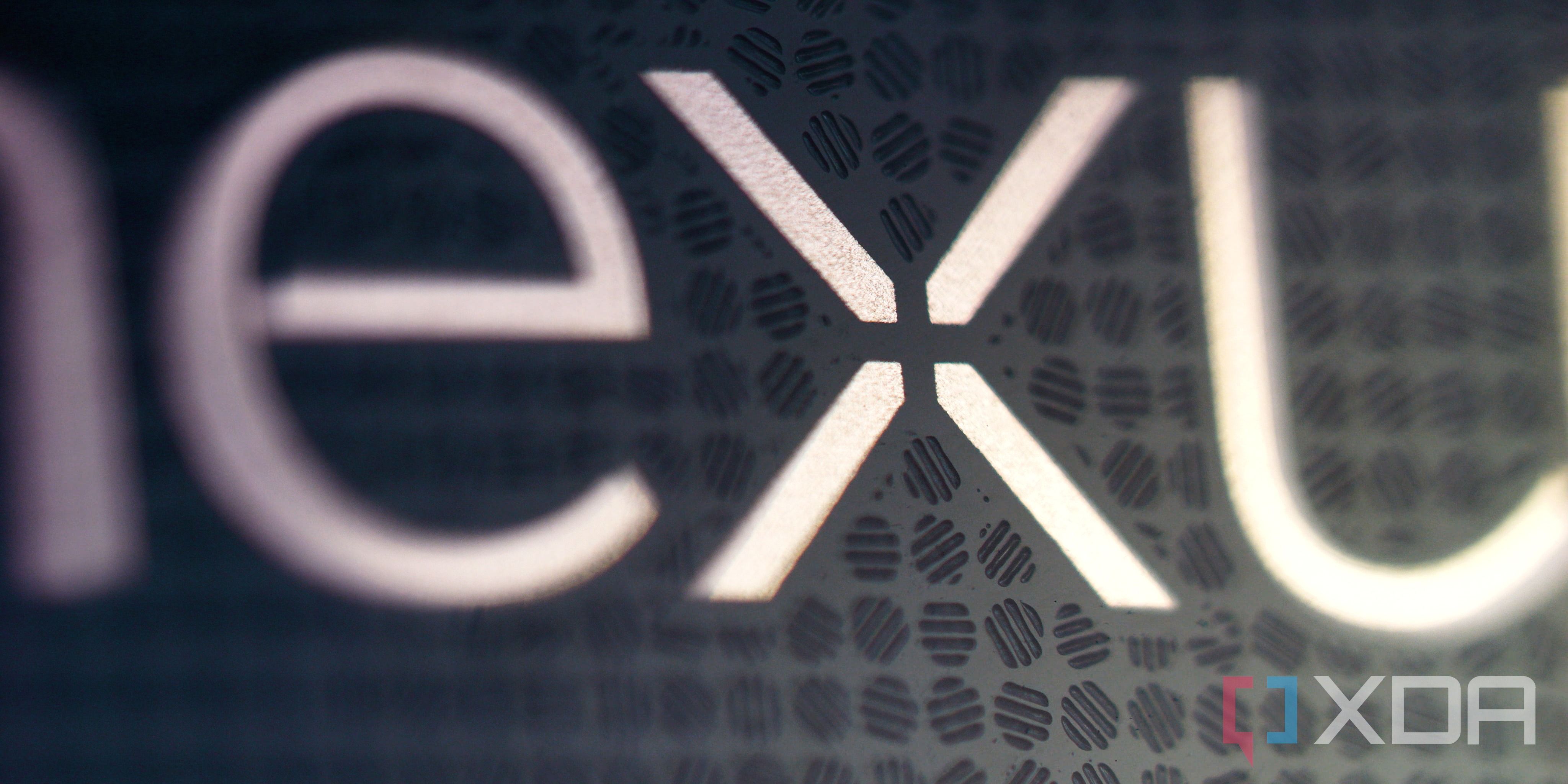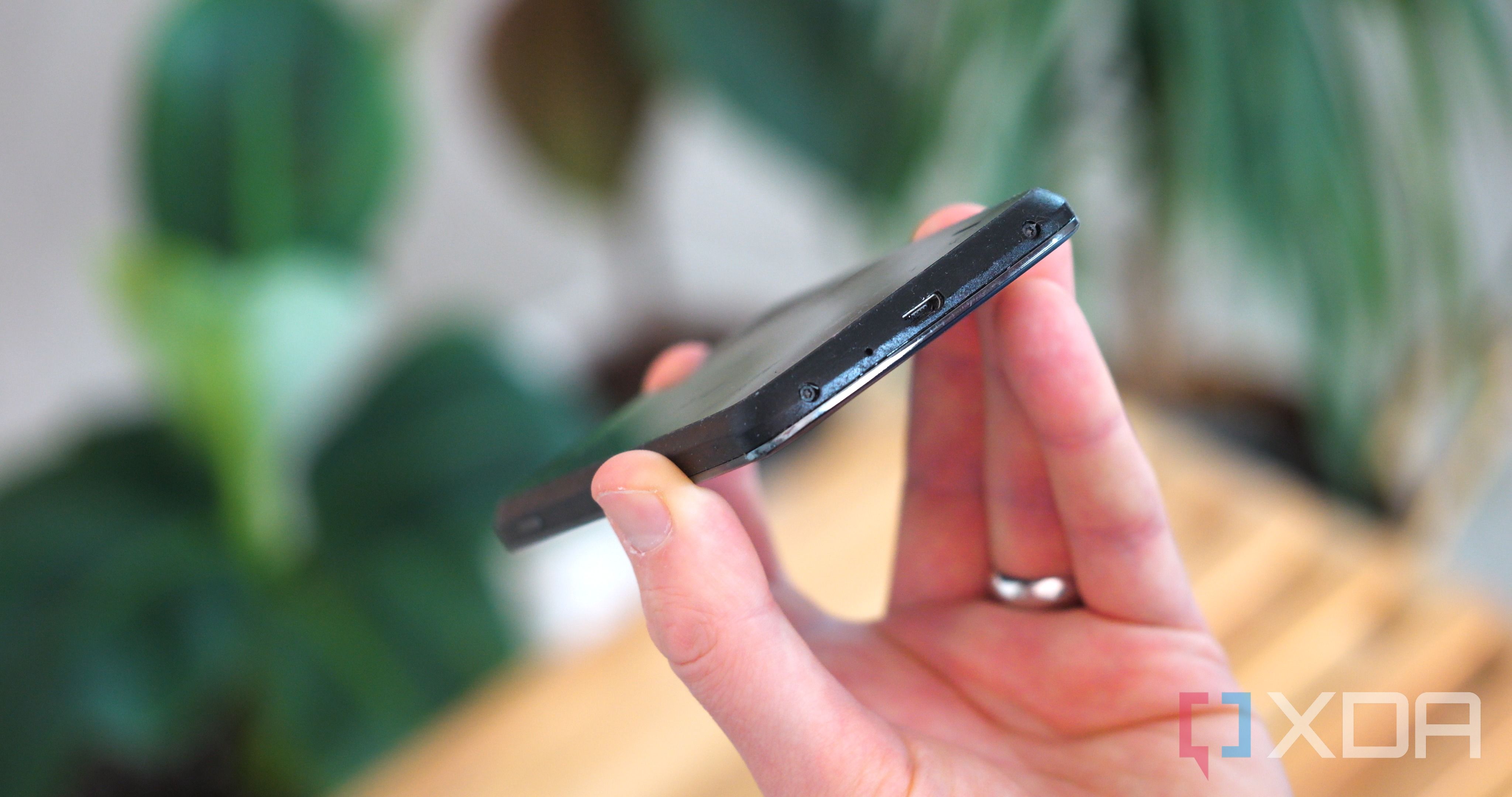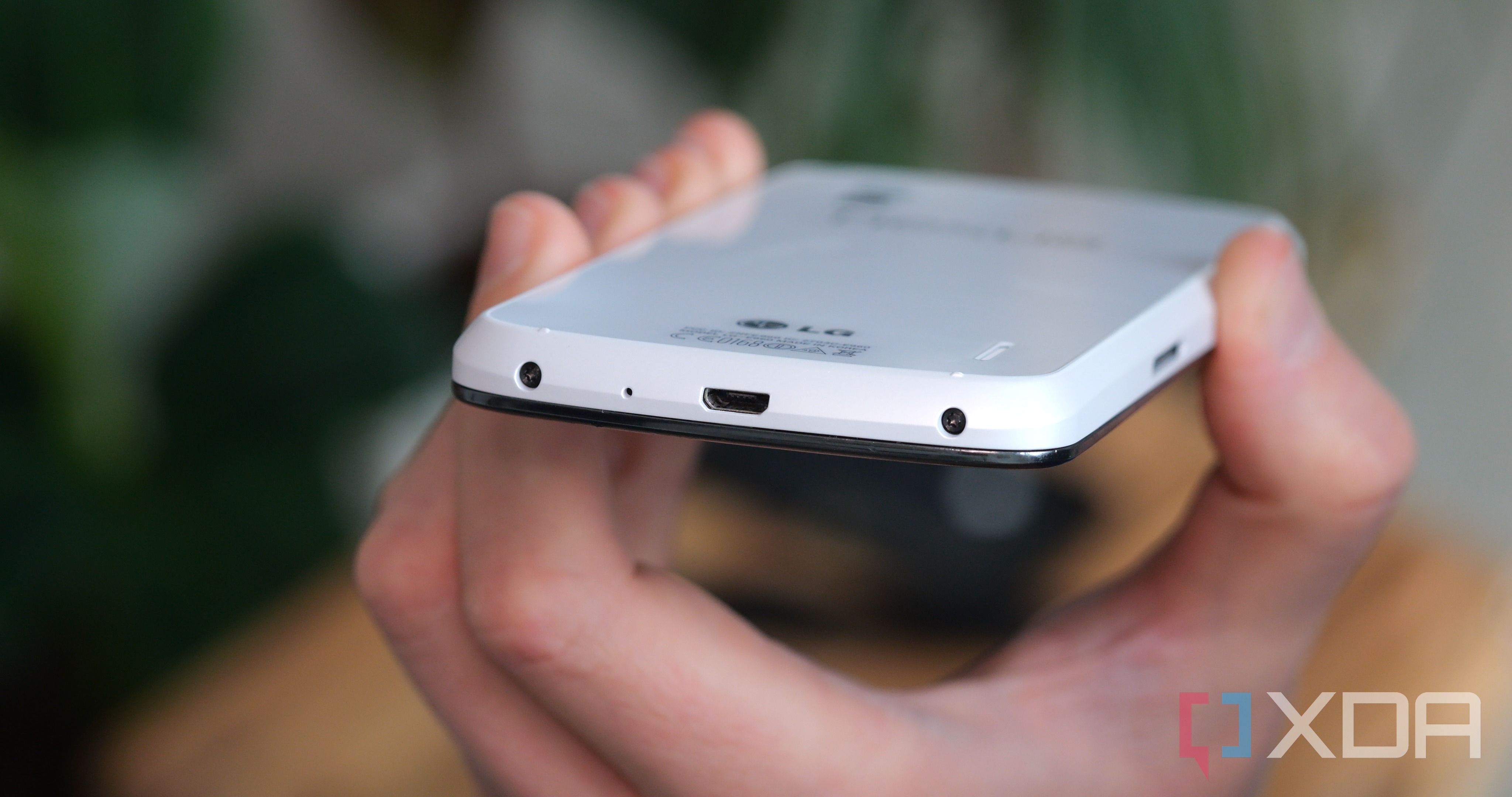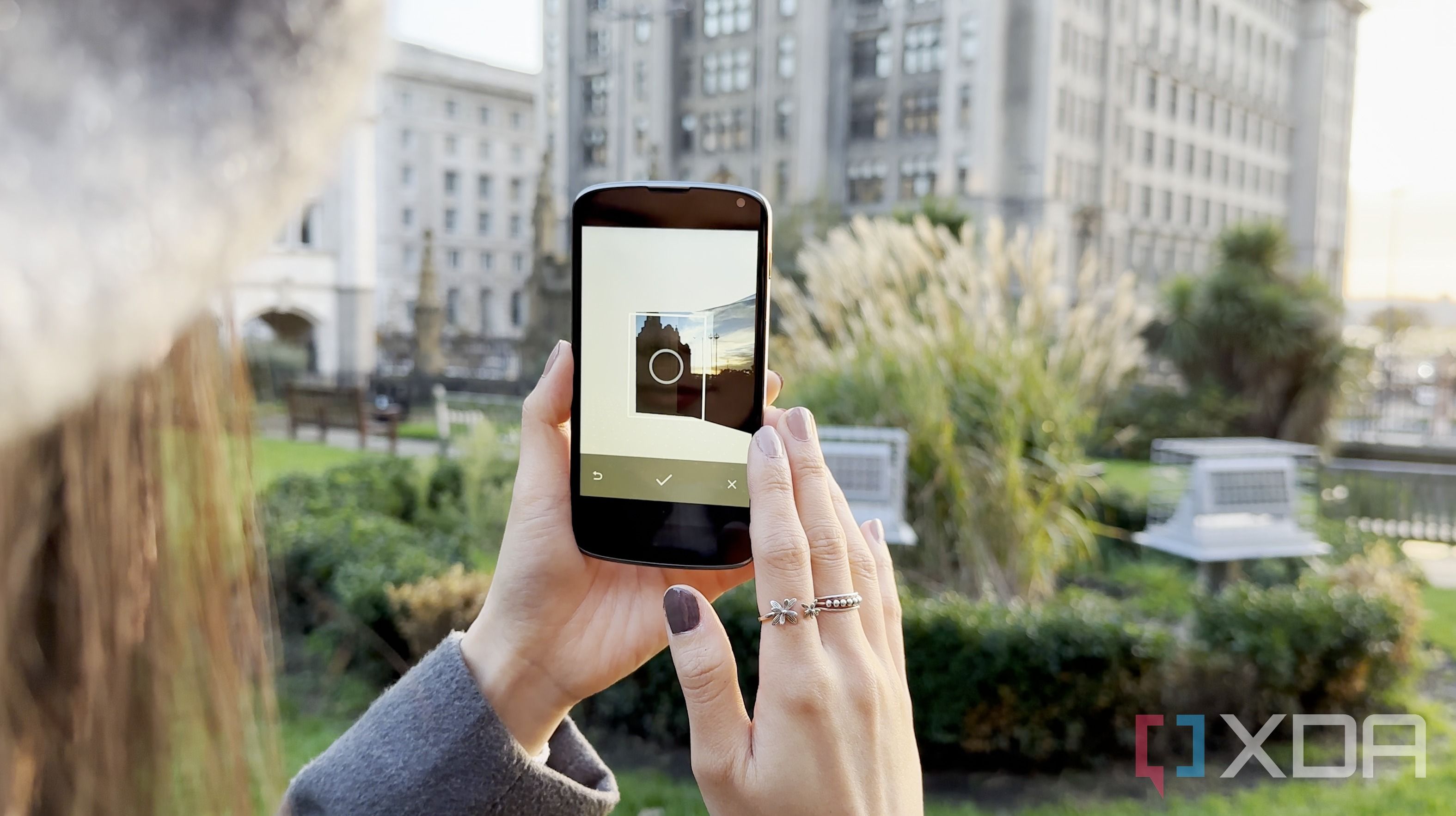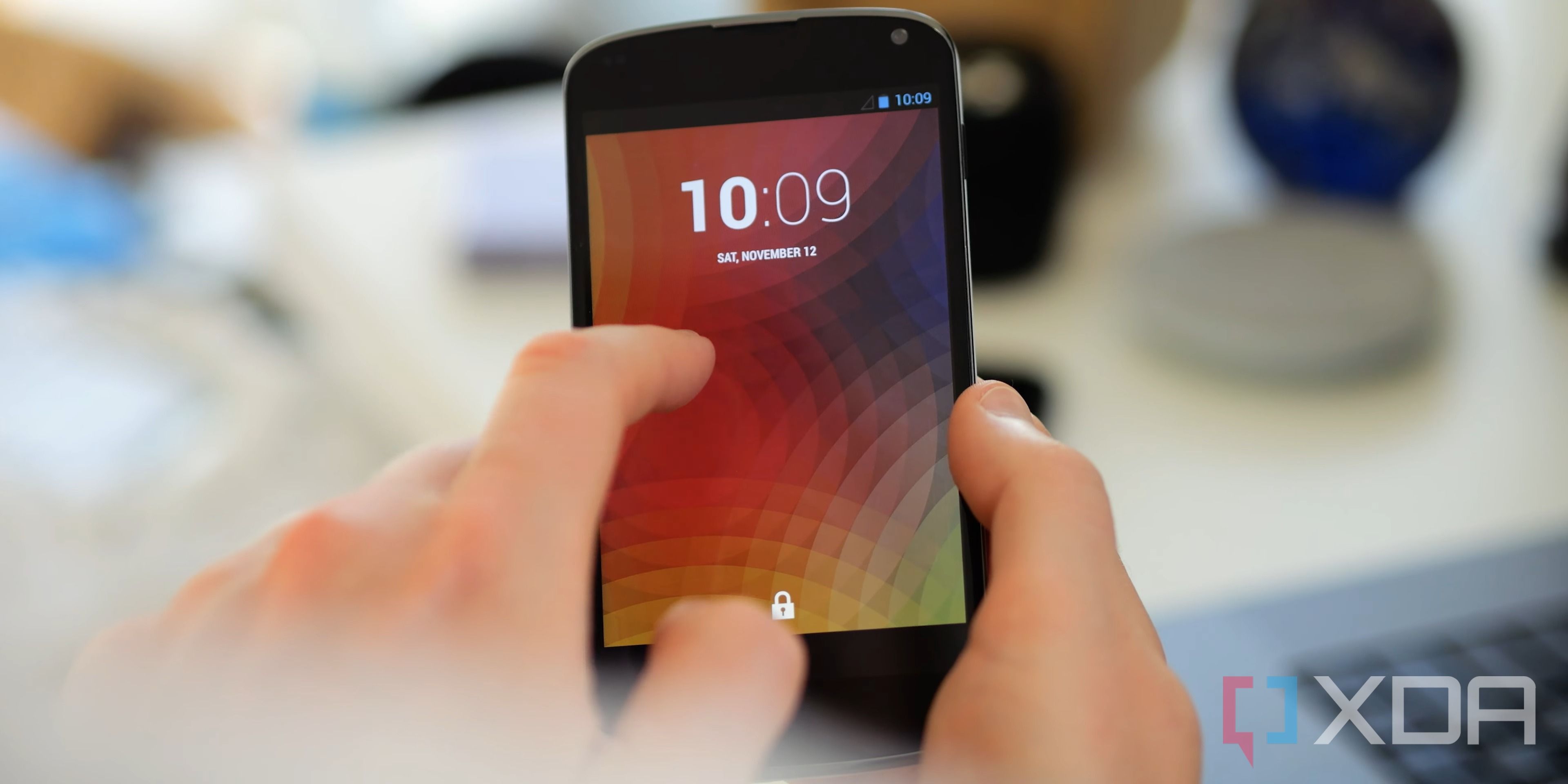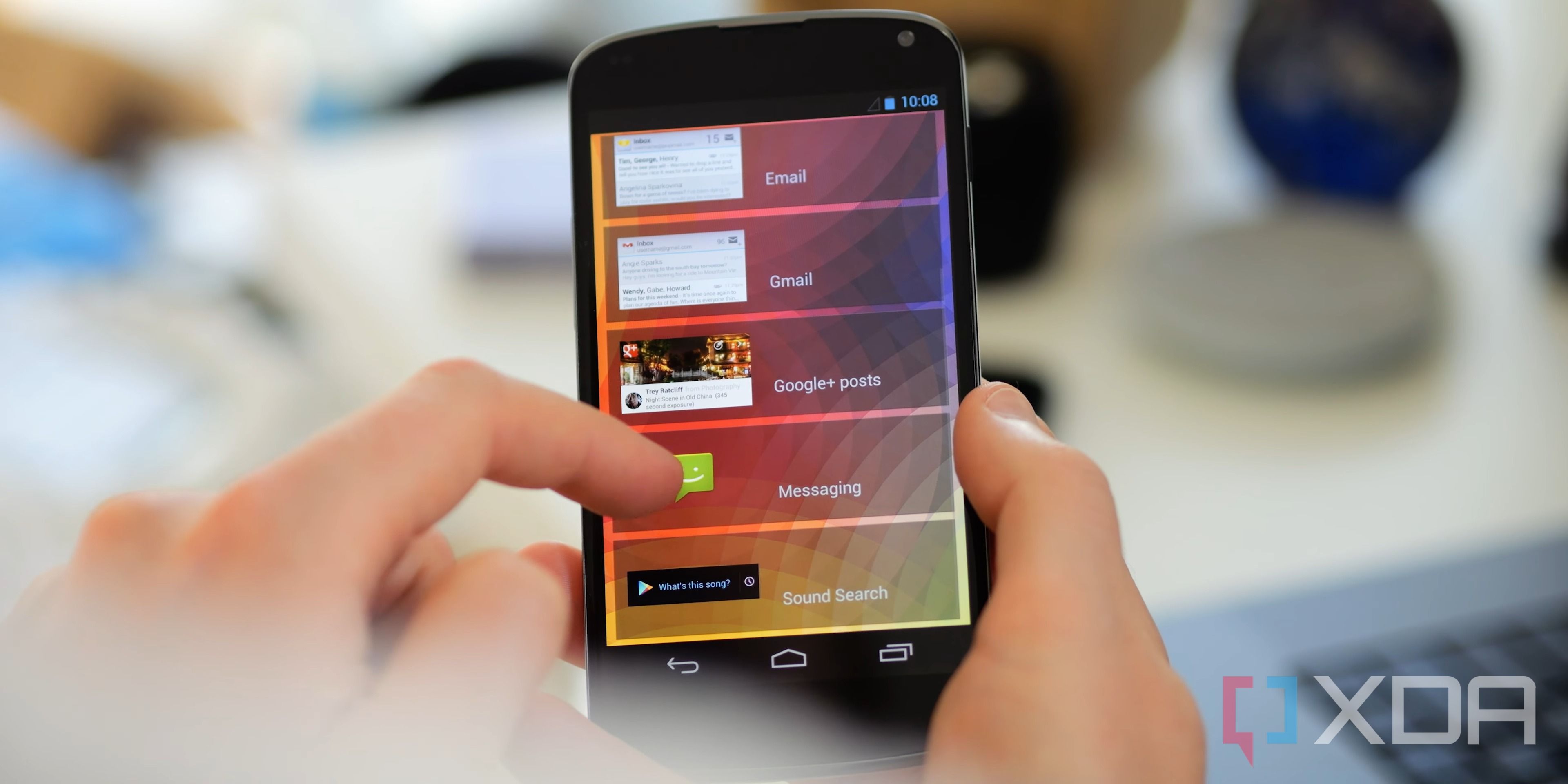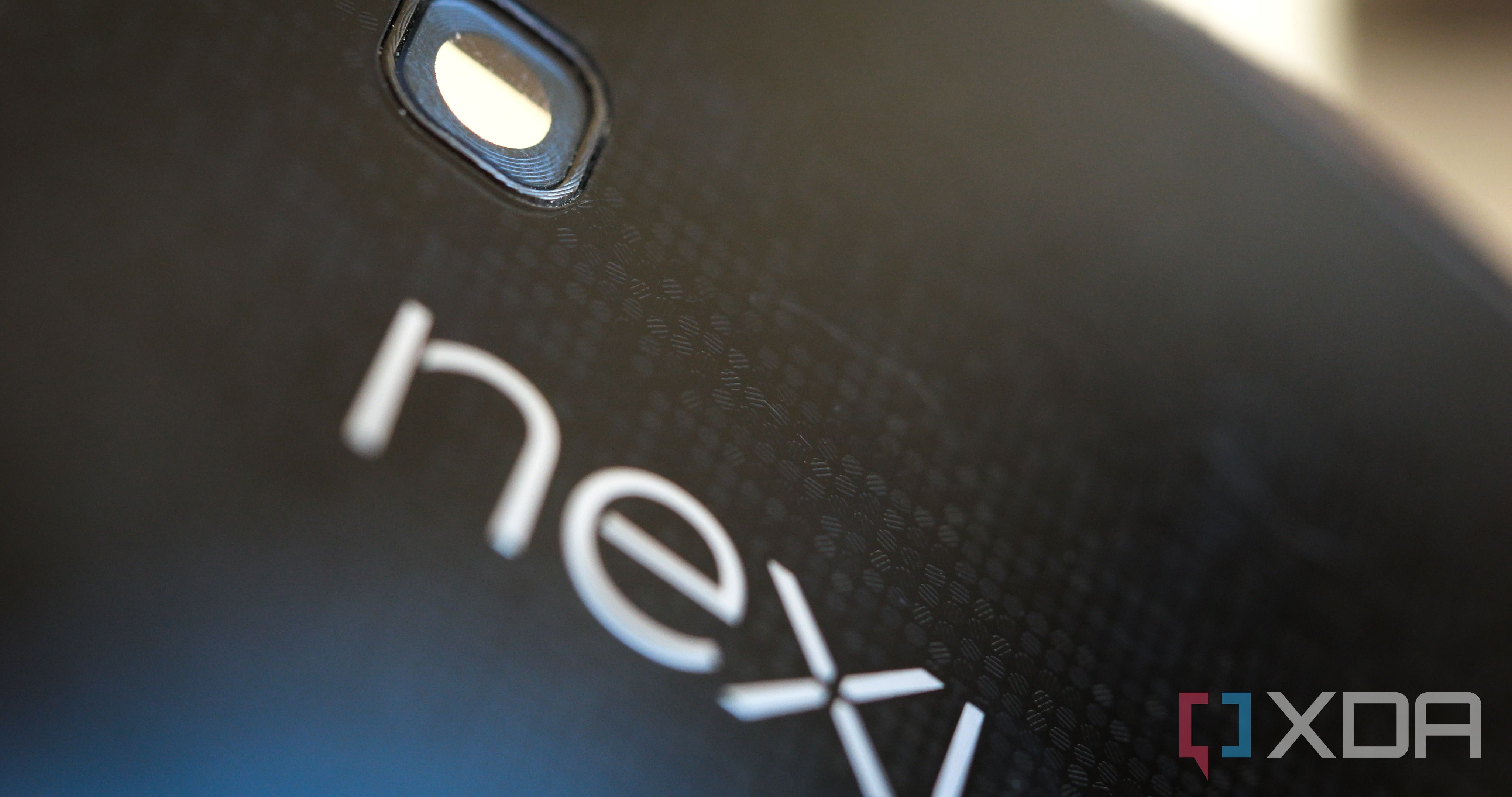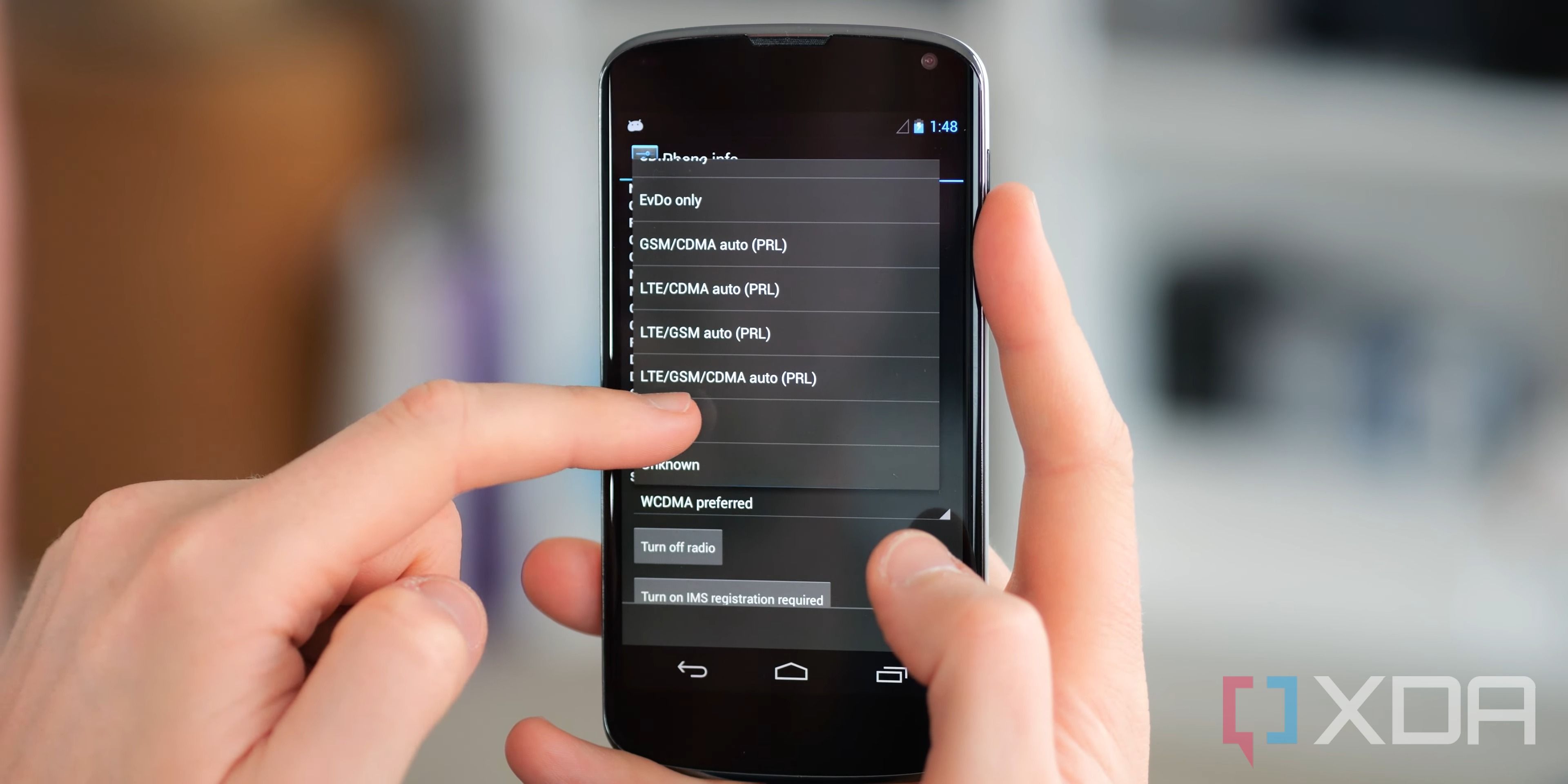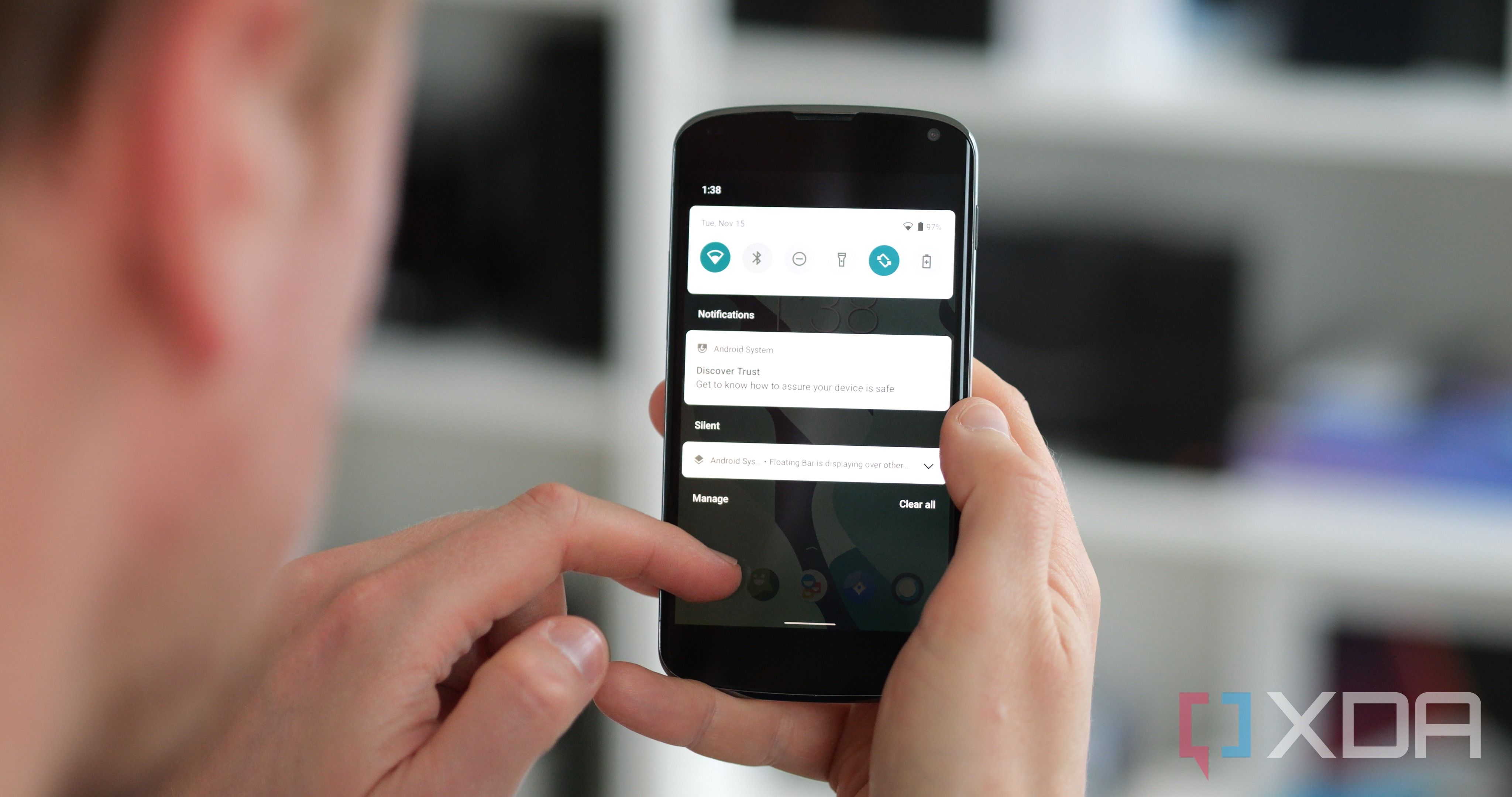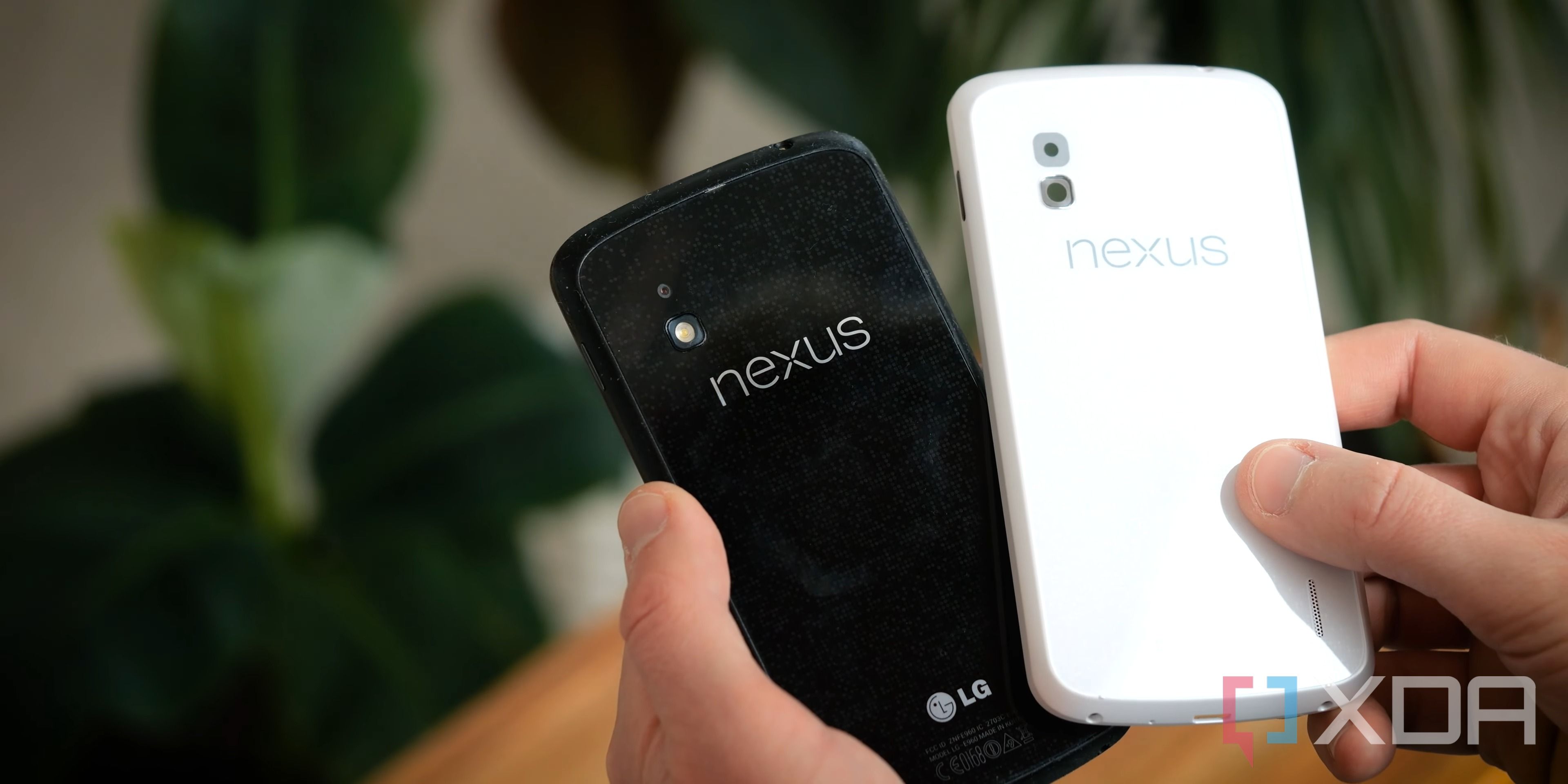The LG Nexus 4 was the fourth entry in the Nexus series after the Galaxy Nexus. It came at a time when smartphone growth was blowing up globally, and 4G LTE was beginning to roll out in many nations worldwide. Every new Android generation brought faster processors, more RAM, more storage, and higher-resolution cameras with an intensive churn throughout generations. But there was more to the LG Nexus 4 than it just being a slick, glittery powerhouse in the early 2010s.
Why Nexus, and why LG?
Google’s Nexus program started out as a way to showcase each year’s Android software version with a co-branded phone created with one of its manufacturer partners. Nexus ran stock Android and got software updates first, making it the phone of choice for Android nerds and software purists. But in 2012, Google flipped the script with Nexus tablets in two sizes and a unique but ultimately abandoned streaming device, the Nexus Q.
Aside from that little change of pace, the Nexus brand was becoming more of a conventional tech brand instead of a yearly phone release for enthusiasts and app developers. That process began in earnest with the Nexus 7 tablet in 2012. For the time, it was fairly powerful, boasting a 7-inch screen, an Nvidia Tegra processor geared towards graphics, and, most importantly, an enticing price tag starting at just $199.
This trend of making affordable devices continued with the Nexus 4 in 2012, made in partnership with LG. The Nexus 4 sold for just $299 in the U.S. and £239 in the U.K. That’s less than half the price of its predecessor, 2011’s Samsung Galaxy Nexus. Even better is that it featured, for the time, some top-tier specifications. The only notable absences were 4G LTE — which was still pretty niche in most of the world — and the fairly small 8GB of storage in the base model, though there was also a 16GB version with a slightly higher price tag.
If this strategy sounds familiar, Google did the early OnePlus strategy before OnePlus even existed: top specs, cheap price, and direct sales. The Nexus 4 was sold directly via Google’s online store, with no carrier involvement. Even simpler was that there was just one version of this phone sold globally — with the model number LG-E960. This was good for 3G connectivity on any HSPA network thanks to its traveler-friendly penta-band radios. For a while, it had a hidden feature that could unlock even faster data speeds, too.
The Nexus 4 was a break from what Google had attempted with the previous Galaxy Nexus, which was sold as a 4G LTE exclusive on Verizon in the U.S. The Galaxy Nexus, or “GNex,” as it was affectionately known, was critically praised and a genuinely great phone for the time, but it had been a sales flop. Even Samsung itself described sales as “minuscule” in court statements during its legal fight with Apple, apparently contributing just $250 million in revenue. As a result, it was time for a change of strategy.
Why did LG want to work with Google?
As for why LG, or any of the other big Android brands, wanted to make a Nexus when you’d sell maybe a million units if you were lucky, has a complicated answer. There’s a bit of “nerd credibility” of sorts, along with brand value, that came with making a Nexus, but mainly it was about boosting the company’s relationship with Google, which would hopefully lead to better products. Back then, if you were a Nexus partner, you got to see the new version of Android as Google was building it. That gave your engineers a headstart and potentially sped up software updates for your company’s other phones.
The situation is now entirely different if companies want to build a relationship with Google in 2022. There’s obviously no more Nexus brand, and every major phone maker gets privileged early access to Android code as Google’s building it — even before the developer previews and public betas. A decade ago, there were real incentives, both direct and indirect, to making one of these Nexus devices.
From a source that XDA TV host Alex Dobie recently spoke with, it also seems like LG was the only manufacturer able to produce the Nexus 4 at the price Google wanted. Google decided pretty early on that it wanted to price the phone very aggressively, which clearly influenced its choices. Interestingly, that’s the same reason Google chose LG to make the Pixel 2 XL many years later, as opposed to the originally planned HTC version of that phone.
LG was no stranger to smartphones, but its early Android efforts hadn’t had anywhere near the success of local rival Samsung’s Galaxy S line. So, the partnership with Google could’ve also been seen as a way to raise its profile in the smartphone world. Nexus 4 coincided with — and was loosely based on — the LG Optimus G, which was the phone that kicked off the LG G-series that stuck around almost until the end of LG’s smartphone-making days.
The Nexus had wireless charging out of the box, which was pretty novel for 2012.
The Optimus G shared many of the same internal specs and one of the Nexus 4’s key design elements: the crystal reflective pattern on its glass back. Pretty much every phone has a glass back today, but back then, it was still pretty unusual to stick glass on the back of an Android phone. The crystal reflective pattern took advantage of the material’s slick appearance to populate the back panel with a shimmering star field of tiny notches. Stick a macro lens in front of this, and you can see the tiny lines on the underside of the glass that gave it this unique look.
The other thing about glass, unlike metal, is it lets you do wireless charging. This was something else that was pretty novel for 2012. Some of Samsung’s phones, like the Galaxy S3 and S4, could charge over the Qi standard but only with the addition of ugly, bulky aftermarket battery doors. The Nexus had it out of the box.
Rubber does not age well
Honestly, the build quality of this phone still holds up even in 2022. Sure, you have to deal with 2012-era top and bottom bezels, but the reflective trim looks sharp, and it’s hard not to appreciate the small touches like the curved edges of the glass.
What definitely doesn’t hold up is the rubberized grip around the sides. Here’s the thing about phones with rubbery bits after a decade: They start to decompose. Yeah, older Nexus 4 devices are somewhat rotting due to a process called rubber reversion, where the material reverts to its natural, more viscous form. It’s non-reversible, too. You can scrape off the sticky layers of rubber, but eventually, the whole thing will revert. As you can imagine, this gets pretty gross — a texture and consistency somewhere between blu-tac and chewing gum. Even worse, it’s a nightmare for picking up dust, hair, and other particles.
With enough time, this will happen to any rubber gadget. Somehow though, in the case of the Nexus 4, there’s a solution. There are brand new white Nexus 4 backs still occasionally available on eBay, and Dobie picked one up. The difference with the white one is the side walls are made of plain old matte polycarbonate — or plastic — so there’s no rubber reversion to worry about.
The Nexus 4 is also shockingly easy to repair. Basically, the only things holding the back on are two Torx T5 screws and some plastic clips, which you can jimmy open pretty easily. So the process to swap the back on an old, gross, and decomposing black Nexus 4 is quite simple.
The white Nexus 4 launched much later into the phone’s lifespan, so they were rare back in the day and even more so now. There are also two tiny but important additions between the original November 2012 back panel and more recent white versions. Tiny nubs were added to later Nexus 4 smartphones to address a common problem. Because the back of this device was glass and there was no camera bump, putting it on a flat surface meant there was little to no friction to hold it in place. As a result, many early Nexus 4 owners complained of phones slowly sliding off tables and countertops. And, because this phone was clad in glass on both sides, such a fall was almost certain to be fatal if the Nexus landed on a hard surface.
The Nexus also boasted a very generous 2GB of RAM and, more importantly, the latest Snapdragon S4 Pro — the first quad-core chip from Qualcomm. All of this made the Nexus 4 the fastest Android phone you could buy in late 2012. It absolutely flew on Android 4.2 Jelly Bean. This made it a uniquely powerful phone considering its price and brings us back to the aforementioned forward-thinking strategy.
There were a few hardware compromises, though. Battery life was middling at best, and the display had a very average 720p LCD panel, which was pretty dim most of the time and lacked the punch of Samsung’s OLED. The colors on the Nexus 4’s display weren’t anywhere near as vibrant as the Galaxy Nexus’s HD SuperAMOLED.
Cameras and the debut of Photosphere
We’ve come quite far in just a decade. In 2012, Android phones didn’t have the larger sensors, the computational photography tricks, or the optical stabilization that today’s flagships rely on. However, even by the standards of the time, the 8MP shooter of the Nexus 4 produced dull-looking shots with poor dynamic range, so it was advisable to hop into the new HDR mode if you wanted more usable snaps.
One new addition that did turn a few heads (and was genuinely impressive for the time) was Photosphere. New and exclusive to the Nexus 4 (though shipped on every Google phone since), this software let you create your own 360-degree photo by scanning the world around you one tile at a time. Then, similar to panorama mode, it would stitch the images together into a sphere of photos. This definitely works best with distant terrains compared to scenes with a lot of stuff in the foreground.
However, Android fans would have to wait another generation for the Nexus 5 to bring the first iteration of HDR+ — the technology that birthed the Google Pixel camera revolution. Aside from Photo Sphere, imaging on the Nexus 4 seemed like a bit of an afterthought.
Jelly Bean, KitKat, and Lollipop
Android 4.2, which the Nexus shipped with, wasn’t a huge update. Earlier in 2012, Google had launched Android 4.1 (called Jelly Bean), which was actually a big deal since it brought big performance improvements. Google went to war on the lag and frame-dropping that plagued many Android phones. 4.2 further tightened things up and added a couple of new features.
The most interesting feature added was one that was unceremoniously dumped a few years later: Lock screen widgets.
We’re just now getting this on iOS with Apple’s always-on display on the iPhone 14 Pro, but Android was doing it a decade ago, albeit in a slightly different way. Lock screen widgets on the Nexus 4 gave you a bunch of extra widget panels on your lock screen. You could add regular Android widgets here, and they’d expand to fill the full-screen area or contract up to the top if they were on your primary lock screen. The implementation wasn’t perfect because not every widget was designed to fit such a large space. There were some great examples like DashClock, which populated this space with useful info like emails, battery levels, and weather in a way that’s shockingly quite similar to how you may have your iPhone 14 Pro configured a decade later.
The most interesting feature added was one that was unceremoniously dumped a few years after Jelly Bean: Lock screen widgets.
There was a catch, though. If you used a pattern or PIN on your phone, lock screen widgets wouldn’t work — for pretty obvious reasons. Since we were still years away from biometric security on Android, this was a hard choice between security and convenience. It’s likely that this had something to do how the feature didn’t last long.
The Nexus 4’s lifespan straddled the big change from the Android 4 to Android 5 design language — from Holo to Material Design. When Android 4.0, Ice Cream Sandwich, launched in 2011, it introduced the sci-fi-looking Holo aesthetic with prominent blue accents throughout. This was dialed back in the more neutral-looking Android 4.4 KitKat before being completely overhauled with 5.0 Lollipop.
The origins of the current Google and Android design language can be traced back to Material Design 1.0 in 2013. It was built around the concept of digital paper, a magical digital canvas that could expand as needed, with depth and shadows and a punchy, more vibrant color palette. The Nexus 4 was one of the few phones of this era to be updated with the full Material Design look and feel.
Back then, though, phones were lucky to get one year of platform updates, let alone the luxury of two that Nexus phones delivered. And so, the Nexus 4 received its last update in the form of Android 5.1.1 in April 2015.
Secret 4G functionality
On paper, the Nexus 4 was a 3G-only device, and you’d expect as much in 2012, especially for the price. But it turned out that, with some hacking, you could tap into hidden 4G LTE capabilities.
This was first discovered back in November 2012 by some users on the XDA forums, and it turned it was fairly simple to enable. Enter Android’s hidden “INFO” menu by entering a code in the dialer, select LTE only as your radio option, and then change your APN — basically, the configuration info that your phone sends to your carrier.
A deep-dive by the legendary Anandtech later showed the phone supported 4G on at least three radio bands, with sufficient tinkering, pointing to potential AT&T LTE support in the U.S.
This (apparently unintended) feature was quickly pulled from the Nexus’ firmware by Google, not least because the phone wasn’t certified to use LTE in any country, meaning it was technically illegal to use. There was a lot of back-and-forth at the time over the potential reason for this vestigial 4G capability being left behind in the Nexus 4. The Snapdragon S4 Pro chip supported LTE, and LG’s own Optimus G was a full-blown 4G phone. So, it’s possible it was easier for Google and LG to just include all the necessary hardware and leave it disabled in the software.
Whatever the case, the fact that the hardware technically supported it allowed brave Nexus 4 owners to continue adding 4G back into the phone via custom radio firmware all the way through until Android Lollipop.
Pretty much everyone loved the Nexus 4
The Nexus 4 was critically praised for its high performance, low price, and clean stock Android OS. However, the camera was an afterthought, and the lack of official 4G LTE was a turn-off for many in the U.S., where LTE had been a thing for almost two years already. Nevertheless, demand for the Nexus 4 was huge. Google’s online store crumbled under the launch-day demand, and supply issues made the phone hard to come by until the early part of 2013. The reason, according to interviews with LG execs at the time, was that Google had set Nexus 4 production levels to match the sales of the previous Nexus — the poorly-selling Galaxy Nexus. Demand for the Nexus 4 was roughly 10 times higher.
All of this led to LG scrambling to ramp up production while local executives simultaneously apologized to customers and pointed the finger at Google.
The Nexus 4 isn’t dead yet, and it can run Android 11
Since this phone is a Nexus, unlocking the bootloader was easy, and there was no shortage of custom ROMs to take the phone far beyond its official resting place with Android 5.1.1.
Like many older Android phones, however, there were a few extra hoops to jump through. First, you needed to repartition the phone to make room for newer, larger versions of Android, which mostly involved redistributing your internal storage so that the area reserved for the OS is larger.
Fortunately, people over on the XDA forums have made this process pretty easy. It’s essentially the same as flashing custom firmware. After repartitioning, the Nexus 4 is ready to fire up Android 11 through LineageOS 18.1.
Demand for the Nexus 4 was huge, with Google’s online store crumbling under the launch-day demand.
Surprisingly, this two-year-old OS works surprisingly well on this 10-year-old phone. It’s arguably a bit less smooth than, say, KitKat or Lollipop, but what you lose in performance, you gain in-app compatibility. It’s definitely more usable than many other phones of this era on modern versions of Android.
Where the Nexus 4 hits a roadblock is with its limited internal storage, especially the 8GB version. Repartitioning gives you more space for the OS but takes away from the storage available for apps and other data. As such, installing Google apps is a no-go, which seriously hampers what you can do with the phone. Still, as a tech demo, it’s impressive to have a relatively up-to-date version of Android running on hardware from a decade ago. The Nexus 4 would still work perfectly fine for things like very basic gaming, web browsing, or music playback.
The Nexus 4 has held up really well
Of all the phones of 2012, the Nexus 4 has probably held up the best, thanks to the efforts of the custom ROM community. Other than the rubber reversion, the hardware still looks and feels decent today, especially considering how cheap it was at launch. The Nexus 4 also kickstarted an idea of powerful, affordable Nexus smartphones that ultimately would stick around for another generation or so. The Nexus 5 in 2013 brought a bigger and better screen, higher-end specs, and a better camera for $50 more. Google soon returned to more traditional flagship pricing with the Nexus 6 and 6P.
The smartphones in the 2020s are much more complex, with things like 5G, 120Hz screens, and multiple cameras pushing up the bill of materials. But the Nexus 4 is the kind of phone that could only really exist in the mid-2010s — the glory days when you really could get the very best Android specs for under $300. In many ways, it defined that era of smartphones and signaled what was to come.
[ad_2]


